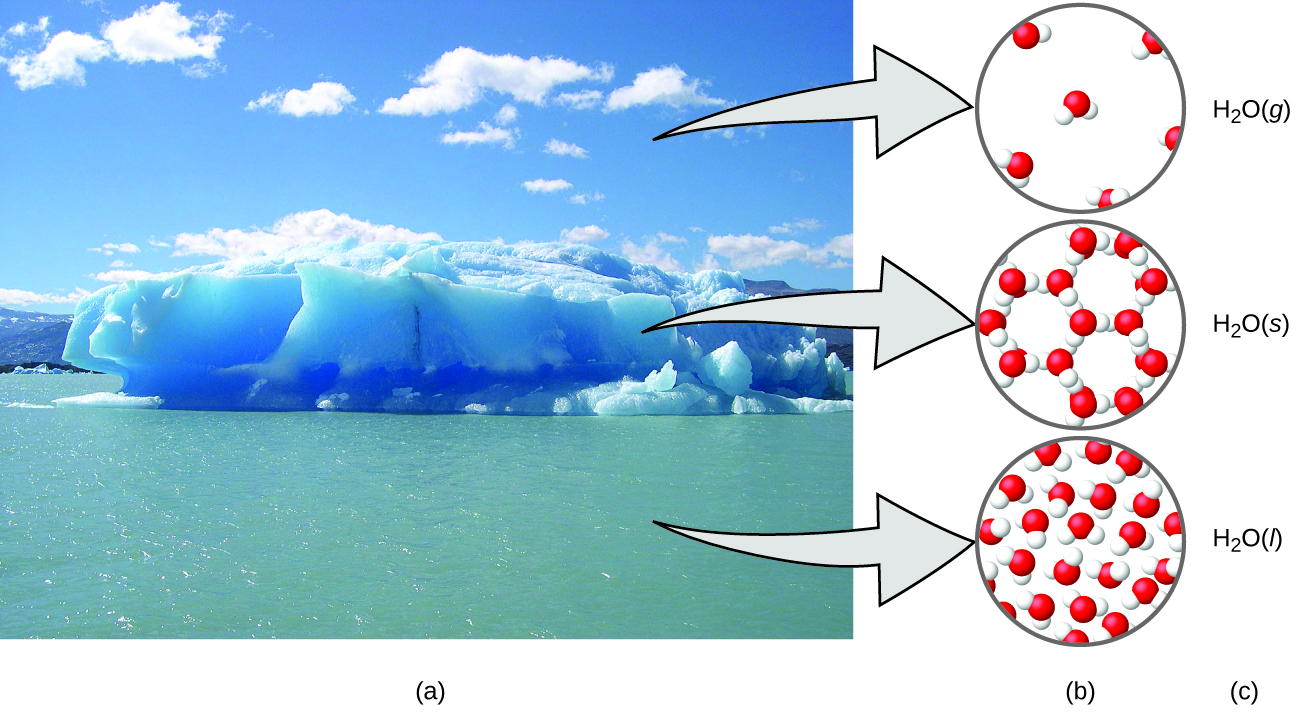| << Chapter < Page | Chapter >> Page > |

Chemistry deals with the composition, structure, and properties of matter, and the ways by which various forms of matter may be interconverted. Thus, it occupies a central place in the study and practice of science and technology. Chemists use the scientific method to perform experiments, pose hypotheses, and formulate laws and develop theories, so that they can better understand the behavior of the natural world. To do so, they operate in the macroscopic, microscopic, and symbolic domains. Chemists measure, analyze, purify, and synthesize a wide variety of substances that are important to our lives.
Explain how you could experimentally determine whether the outside temperature is higher or lower than 0 °C (32 °F) without using a thermometer.
Place a glass of water outside. It will freeze if the temperature is below 0 °C.
Identify each of the following statements as being most similar to a hypothesis, a law, or a theory. Explain your reasoning.
(a) Falling barometric pressure precedes the onset of bad weather.
(b) All life on earth has evolved from a common, primitive organism through the process of natural selection.
(c) My truck’s gas mileage has dropped significantly, probably because it’s due for a tune-up.
Identify each of the following statements as being most similar to a hypothesis, a law, or a theory. Explain your reasoning.
(a) The pressure of a sample of gas is directly proportional to the temperature of the gas.
(b) Matter consists of tiny particles that can combine in specific ratios to form substances with specific properties.
(c) At a higher temperature, solids (such as salt or sugar) will dissolve better in water.
(a) law (states a consistently observed phenomenon, can be used for prediction); (b) theory (a widely accepted explanation of the behavior of matter); (c) hypothesis (a tentative explanation, can be investigated by experimentation)
Identify each of the underlined items as a part of either the macroscopic domain, the microscopic domain, or the symbolic domain of chemistry. For any in the symbolic domain, indicate whether they are symbols for a macroscopic or a microscopic feature.
(a) The mass of a lead pipe is 14 lb.
(b) The mass of a certain chlorine atom is 35 amu.
(c) A bottle with a label that reads Al contains aluminum metal.
(d) Al is the symbol for an aluminum atom.
Identify each of the underlined items as a part of either the macroscopic domain, the microscopic domain, or the symbolic domain of chemistry. For those in the symbolic domain, indicate whether they are symbols for a macroscopic or a microscopic feature.
(a) A certain molecule contains one H atom and one Cl atom.
(b) Copper wire has a density of about 8 g/cm 3 .
(c) The bottle contains 15 grams of Ni powder .
(d) A sulfur molecule is composed of eight sulfur atoms.
(a) symbolic, microscopic; (b) macroscopic; (c) symbolic, macroscopic; (d) microscopic
According to one theory, the pressure of a gas increases as its volume decreases because the molecules in the gas have to move a shorter distance to hit the walls of the container. Does this theory follow a macroscopic or microscopic description of chemical behavior? Explain your answer.
The amount of heat required to melt 2 lbs of ice is twice the amount of heat required to melt 1 lb of ice. Is this observation a macroscopic or microscopic description of chemical behavior? Explain your answer.
Macroscopic. The heat required is determined from macroscopic properties.

Notification Switch
Would you like to follow the 'Chemistry' conversation and receive update notifications?